Planting hopes, composting bad memories and cooking dreams with home-grown herbs
By Rachael Le Clear
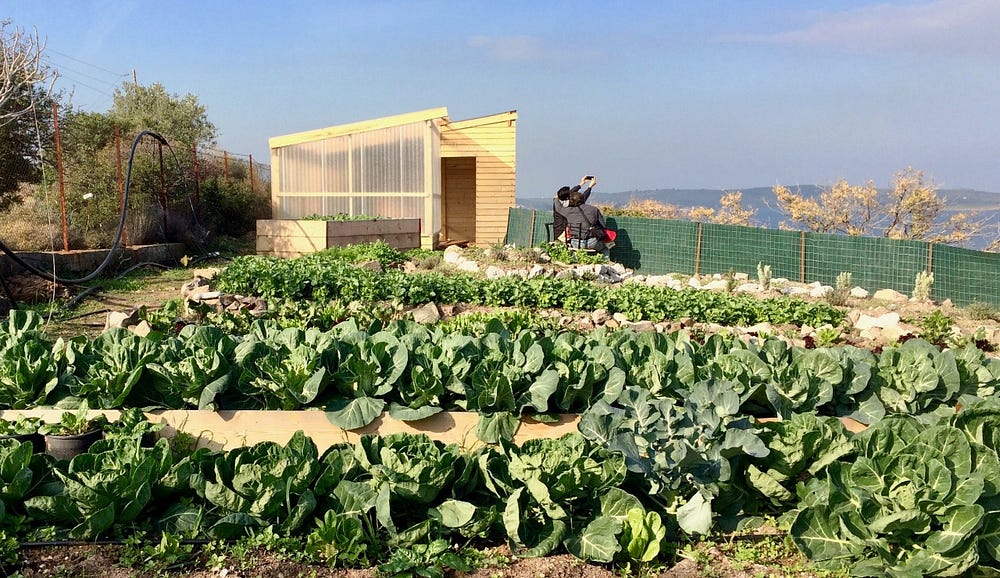
Atop a hill on the island of Lesvos, just outside the hustle and bustle of the capital city, sits a garden. It’s tucked into the back corner of One Happy Family community center, a collaborative space built and run together with people from nearby refugee camps. As you open the garden gate and walk inside, you can almost feel the atmosphere change. The sounds of the other activities — balls bouncing, people cheering, weights clanking — fade away, and a sense of peace begins to encompass you. You walk the paths between the garden beds, admiring the crops and perhaps picking a weed or two, and your gaze rests on the sea in front of you and the mountains of Turkey beyond. From the hill behind you, the jingle of sheep bells tells you you’re not alone. You breathe in the clean air, and for a moment, you close your eyes and let everything go. Inhale. Exhale. Breathing. Being.
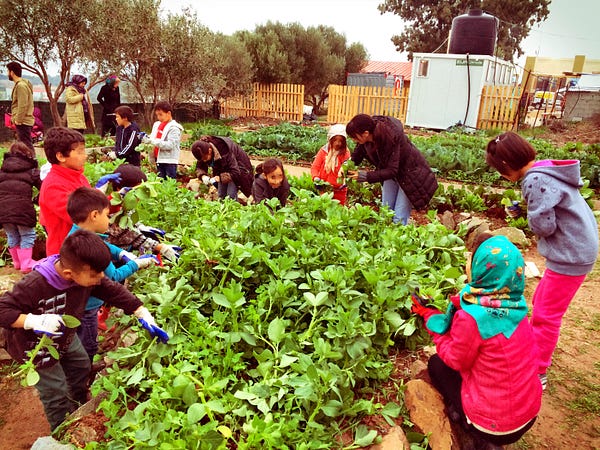
At other moments, you find it aflutter with activity. Children descend upon baskets of garden gloves, ready to dig into the day’s hands-on lesson. Helpers shovel wheelbarrows of gravel into the paths to help you avoid the mud. Piles of pallets are deconstructed and rebuilt into benches. Women carry freshly painted planters to the fence to dry. Volunteers bring kitchen scraps to the compost and wood to the stove in the greenhouse, so that the seedlings stay warm and happy. It is alive.
We call it the ECO-Hub.
How on earth did it happen?
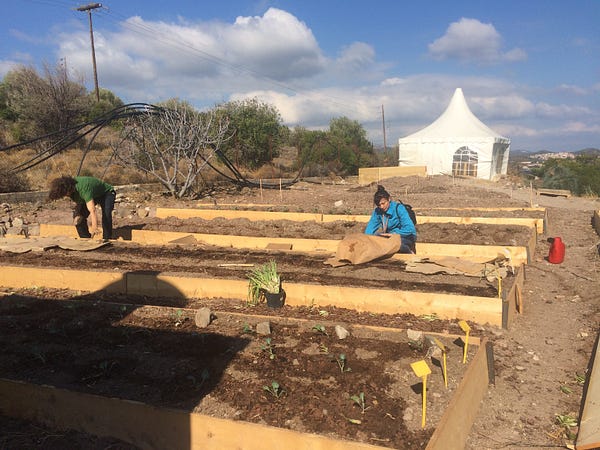
This project was created, with the generous help of our sponsor, SLush. Better Day’s dream was to create a space where one could talk but also apply organic food production, permaculture, ecology, natural cosmetics, and other sustainability topics in a healthy and peaceful environment. In the past 6 months since the day it was launched, this education initiative has reached people from across the world, of all ages, and we hope that it’s a foundation upon which many things can grow.
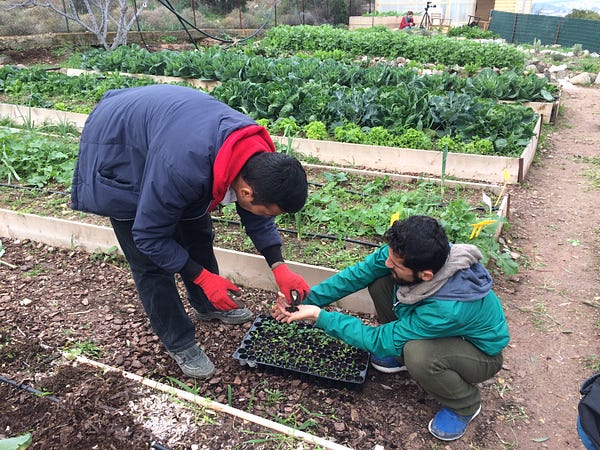
But for the moment, it is a garden. It is a place to grow food. To feel the soil between our fingers. To sow seeds and watch them mature, slowly, slowly, every day. To see the rain trickle down the leaves of the largest heads of cabbage we’ve ever seen. And then to deliver those beautiful vegetables by the basketful to the kitchen, where they will be prepared with love to nourish our bodies and our souls.
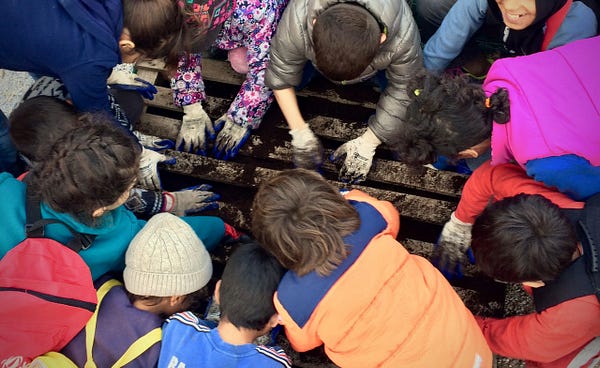
Today, it is a place to share knowledge. For children to search for evidence of harmful or beneficial insects amongst the plants, and maybe even to find some at work. For Mehdi* to teach his niece the difference between crops and weeds. For Amal* to show the class how to plant different types of vegetables, both as seedlings and directly in the ground. For Zarah* to tell us what her garden in Syria was like, and how we might be able to grow crops native to her land here in Greece. And for Ramin* to do constant vocabulary lessons from Farsi to English and back: pumpkin, cucumber, shovel, nail, screw, soil, big gravel, small gravel…
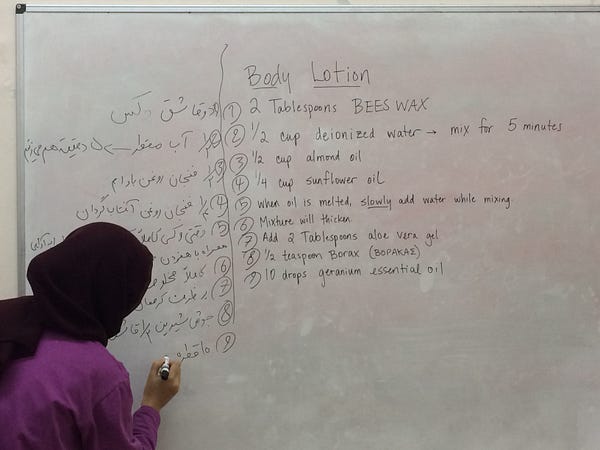
It is a mosaic, created by hands from all over the world. A place where tradition meets innovation, featuring both conventional agricultural and sustainable permacultural growing techniques. Where function and form intertwine to create a beautiful and thoroughly practical greenhouse-classroom, home to seedlings and vertical gardens, meetings about waste management and upcycling, and classes on everything from Natural Cosmetology to breakdancing. A place which has inspired visitors to return and invest, adding to the space in their own unique way with their time, their donations, their ideas, and their hard work. Together, they’ve built an incredible space that brings joy and a sense of ownership to so many.
“In every walk with nature, one receives far more than he seeks.” — John Muir
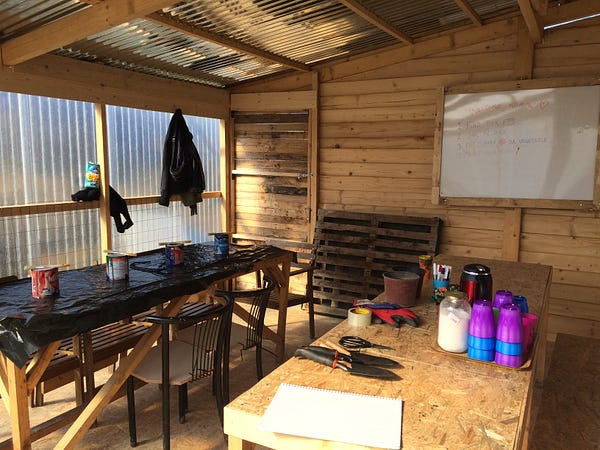
We are pleased to introduce ECO-Hub as a finished product — if such a thing can ever be truly finished, that is. Even now, just hours after driving the final screws, community members are already suggesting new ways to use the space. But the completion of the greenhouse-classroom marks the realization of what we set out to create, and we are thrilled to see it already so widely utilized and enjoyed. We can’t wait to see what grows from here.
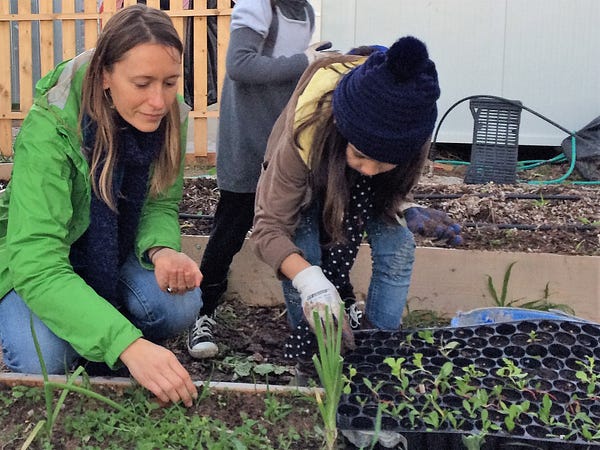
As I close the garden gate on my last day and reflect upon what so many have come together to create, a profound sense of gratitude washes over me. I think of those who began the project before I arrived; of Better Days, which entrusted the project to me; of the volunteers who worked tirelessly every day; of One Happy Family, which has become more like a real family than I ever imagined… and of the few members of that community who have invested themselves in the project and will now take ownership of the space, as we step back. And I am filled with gratitude and love. It has been my great pleasure to serve with you all. Until next time: na ‘ste kala!
